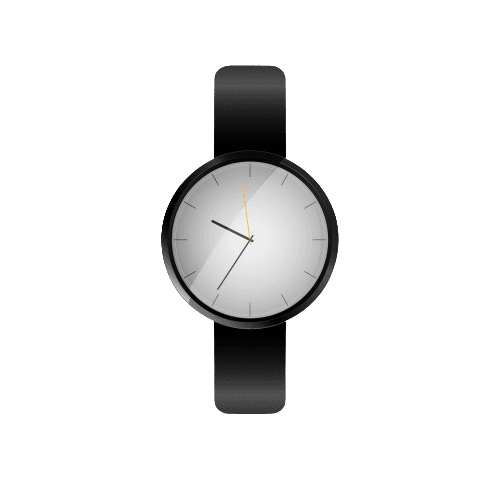Body
Think You Understand Physical Fitness? Think Again!

Team NxtClue
Content
|
3 mins
|
Aug 26, 2024

0:00/1:34
Don't have enough time to read?
Listen

Do You Really Understand the Concept of Physical Fitness?
When we think of physical fitness, the first thought that often comes to mind is hustling in the gym and getting some workout done. Men might imagine being physically fit as having proper muscles and V-lines. Women might think it means being slim and toned. But what if I were to tell you that’s not entirely correct? To put it simply, physical fitness refers to how healthy your body is, how efficiently it’s functioning, and how able it is when faced with ailments and diseases. However, the notion also incorporates the ability to perform rigorous physical activities.
That’s right, there’s nothing about having rippling muscles, a size zero body, doing a hundred squats a day, or going on a maple syrup diet. And while all this might be included in someone’s definition of physical fitness according to their personal wants, it’s definitely not mandatory.
So, what really comes under physical fitness?
Diet: What you eat plays a significant role in how fit you are. As long as you’re getting all the nutrients in the right proportion for your body to function efficiently, you can consider yourself physically fit.
Physical Activity: While there’s no need to go overboard at the gym unless you want to, getting some physical activity is essential for your body’s wellness. Even if it’s just a jog or a brisk walk around the park in the morning, it contributes to your fitness.
Body Composition: Although not always the most reliable indicator of physical fitness, your body composition of muscle, fat, bones, and tissues is nonetheless an element used to measure fitness.
Strength and Endurance: If you have the strength to run for a while, climb stairs without gasping for breath, and have good stamina and coordination, you’re probably quite fit.
Overall Well-being: We often ignore the signals our body sends out—such as frequent headaches, muscle pain, or regular coughs and colds—that warn us about our health. However, if you’re feeling great and can function efficiently, you can go ahead and call yourself fit!
As you can see, there’s more to physical fitness than meets the eye. Unless we redefine our basic understanding of health and well-being, we’ll never be able to adopt the right approach to achieving it. What do you think?
Download
Related Blogs

11 min
Body
Nutrition Tips for Better Health

Team NxtClue
|
26/08/24

11 min
Body
Stress Relief Through Fitness

Team NxtClue
|
26/08/24

11 min
Body
Weight Loss vs. Fat Loss

Team NxtClue
|
26/08/24

11 min
Body
Why Fitness Matters

Team NxtClue
|
26/08/24

I May Not Be the Menu, But I Can Still Guide You – I Know Some Shortcuts!
With us
Decision is yours
Without us

Copyright © 2024 NxtClue | All Rights Reserved
0:00/1:34
Don't have enough time to read?

Listen

3 mins
Body
Think You Understand Physical Fitness? Think Again!

Team NxtClue
|
Aug 26, 2024
Download
Do You Really Understand the Concept of Physical Fitness?
When we think of physical fitness, the first thought that often comes to mind is hustling in the gym and getting some workout done. Men might imagine being physically fit as having proper muscles and V-lines. Women might think it means being slim and toned. But what if I were to tell you that’s not entirely correct? To put it simply, physical fitness refers to how healthy your body is, how efficiently it’s functioning, and how able it is when faced with ailments and diseases. However, the notion also incorporates the ability to perform rigorous physical activities.
That’s right, there’s nothing about having rippling muscles, a size zero body, doing a hundred squats a day, or going on a maple syrup diet. And while all this might be included in someone’s definition of physical fitness according to their personal wants, it’s definitely not mandatory.
So, what really comes under physical fitness?
Diet: What you eat plays a significant role in how fit you are. As long as you’re getting all the nutrients in the right proportion for your body to function efficiently, you can consider yourself physically fit.
Physical Activity: While there’s no need to go overboard at the gym unless you want to, getting some physical activity is essential for your body’s wellness. Even if it’s just a jog or a brisk walk around the park in the morning, it contributes to your fitness.
Body Composition: Although not always the most reliable indicator of physical fitness, your body composition of muscle, fat, bones, and tissues is nonetheless an element used to measure fitness.
Strength and Endurance: If you have the strength to run for a while, climb stairs without gasping for breath, and have good stamina and coordination, you’re probably quite fit.
Overall Well-being: We often ignore the signals our body sends out—such as frequent headaches, muscle pain, or regular coughs and colds—that warn us about our health. However, if you’re feeling great and can function efficiently, you can go ahead and call yourself fit!
As you can see, there’s more to physical fitness than meets the eye. Unless we redefine our basic understanding of health and well-being, we’ll never be able to adopt the right approach to achieving it. What do you think?
Copyright © 2024 NxtClue | All Rights Reserved

I May Not Be the Menu, But I Can Still Guide You – I Know Some Shortcuts!
With us
Decision is yours
Without us

Copyright © 2024 NxtClue | All Rights Reserved

I May Not Be the Menu, But I Can Still Guide You – I Know Some Shortcuts!
With us
Decision is yours
Without us

Related Blogs